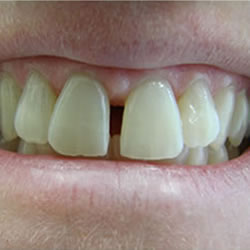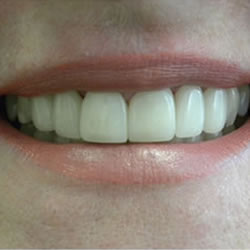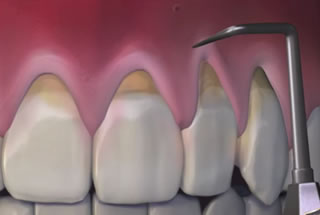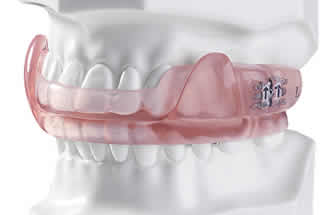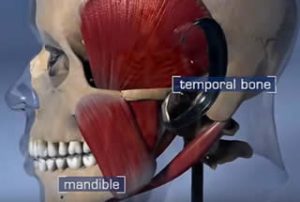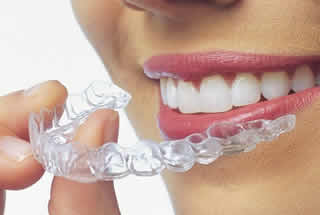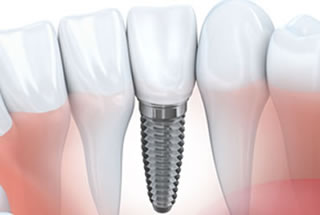If you’ve lost your teeth, whether due to injury, tooth decay or gum disease, consider complete or partial dentures at Dr. Yolanda Cruz Dentistry in Toronto. A denture is a removable replacement for missing teeth and surrounding tissues. The teeth are made of tooth colored acrylic or porcelain and there is a wide selection of colors to match your gums. The dentures are held in place in the mouth by forming suction with the gums. There are two types of dentures – complete and partial dentures. Complete dentures are used when all the teeth are missing, while partial dentures are used when some natural teeth remain. The process to fabricate both types of dentures are the same. Dentures can help restore your day-to-day functions, such as eating and speaking, as well as help restore your confidence by improving your appearance and smile.
The denture process from start to finish can take approximately 8 to 12 weeks, depending on the kind of dentures you want and the overall health of your mouth. If Toronto dentist Dr. Cruz needs to extract teeth for your denture placement, your jaw will still need a few weeks to heal.
Denture Treatment Process
Dr. Yolanda Cruz will fabricate dentures that replicate your original teeth, so your mouth will be used as a model. First, Dr. Yolanda Cruz will take an preliminary impressions of the top and bottom of your mouth. At this stage, Dr. Cruz will determine the ideal length of the new teeth and record the proper bite and correct alignment between the upper and lower teeth using a centric tray.
The preliminary impressions are sent to a lab, where preliminary models are created, along with custom impression trays. The preliminary models are mounted with the bite record previously made by the centric tray. The custom impressions trays are built with the help of a gnathometer.
At the next visit, the Dr. Cruz will take final impressions of your mouth using the custom trays returned from the lab. She will also record final bite and alignment, and help you select the color of the denture gums and shade and size of the teeth. Dr. Cruz will send all of this information back to the lab. The lab will pour new stone models into the final impressions before mounting. With these in place, the teeth can now be set on the wax one by one based on the color, shade and size of the teeth that the doctor and patient picked out.
In the subsequent visits, using the wax try-in, Dr. Cruz will adjust your bite, test your speech and check the appearance and functionality of the denture teeth and gums. After a satisfactory fit and appearance is achieved, the denture is then sent back to the laboratory for fabrication.
Denture Options
There are new advances in making dentures. One such advance is an implant-supported denture that stabilizes the denture. This kind of denture requires the placement of implants in your gums.
Immediate Denture
If you’ve suffered severe tooth decay, injury, or gum disease and need your remaining teeth replaced, an immediate denture may be right for you. An immediate denture, as its name implies, is a type denture that is fitted in your mouth immediately after your teeth are removed. It makes the transition to dentures less noticeable and also helps keep you performing everyday functions, like chewing and speaking.
Immediate Denture Treatment
Immediate dentures are made using your mouth as a model. First, the Dr. Cruz will take an accurate impression of the upper and lower arches of your mouth and establish a bite that best resembles your original bite. She will also help you select the shape and color of the denture teeth and gums. This impression is then sent to the dental laboratory.
During the next visit Dr. Cruz will adjust your bite, test your speech and check the appearance and functionality of the denture teeth and gums. If necessary, this step will be repeated to ensure that everything fits and looks just right.
After a satisfactory fit and appearance are achieved, the denture is then sent back to the laboratory for fabrication. At the subsequent visit, your remaining teeth will be removed and the denture will be delivered. Please note that the extractions may be performed at one visit or they may be removed in two or more visits depending on the number and condition of the teeth to be extracted, the shape of your jaws and your health condition. Dr. Cruz will best advise you of the timing for your extractions.
Adjusting to Your Immediate Denture
While we make every effort to provide you with a proper, functional denture, please keep in mind that a denture will never fit and perform the way natural teeth do. After delivery of the immediate denture, it may require a few adjustment visits and some time for you and your immediate denture to adapt to each other. This is due to the fact that when your gums heal from the extractions, they will shrink for a period of about 6 months. As a result, your denture needs to be re-based or re-lined to fit properly.
The most important point to remember is that adjusting to your immediate dentures is a process; in some cases, it takes weeks or months to get used to your immediate denture.
An immediate denture can also alter your eating; you will not have the same chewing efficiency as you had with your natural teeth. An immediate denture will also alter your speaking and it may require a bit of practicing before you get comfortable. Please note that due to differences in the shapes of the jaws and the strong muscle movements of the tongue and cheek, a lower denture may be harder to keep in the mouth compared to an upper denture.
Fortunately there are new dental alternatives, such as implants, which can help restore functionality closer to your natural teeth. You can discuss this option with Dr. Yolanda Cruz.
Partial Denture
Partial dentures are replacement teeth for people who have lost one or more of their teeth. These dentures can be removable. It consists of a denture base, which closely resembles the color of your gums and denture teeth, that is attached to a supporting framework. The partial denture then attaches to the existing teeth via a clasp or some other retentive device.
Partial dentures are fabricated by using a model of your mouth. Making a partial denture requires about 6-8 weeks, however this can vary from one patient to another.
Partial Denture Treatment
The first step in making a partial denture is the preparation of the teeth. During this phase Dr. Cruz will prep the teeth that the partial denture will use for support. Next, she will take an accurate impression of the upper and lower arches of your mouth and record your bite. The impressions are then sent to the dental laboratory.
At the subsequent visits Dr. Cruz will evaluate your bite, test your speech and check the appearance and function of the partial denture teeth and gums. Once the final satisfactory fit and appearance are achieved, the denture is then sent back to the laboratory for final fabrication.
Different Types Of Partial Dentures
There are newly developed techniques in making partial dentures. One such advance is an implant-supported partial denture which is more stable than a regular partial denture. While it offers additional support it also requires the surgical placement of implants in your mouth.
There is also a partial denture that uses a special material called valplast which is more aesthetically pleasing to the eye. This kind of partial denture does not use metal as its base and has hooks that are made with a flexible plastic material.
Stayplate (Temporary Denture)
If you are scheduled to have a tooth pulled before getting your partial denture, then Dr. Cruz may recommend a temporary partial denture called a stayplate while your gums and their supporting bone are healing. A stayplate will replace the missing tooth or teeth and can help you with your chewing and speaking until the permanent denture is ready. A stayplate will also help maintain your appearance when in public and keep your existing teeth from shifting in your mouth and creating bigger problems.
The Stayplate Treatment
Stayplates are made using your mouth as a model. First, Dr. Cruz will take an accurate impression of the upper and lower arches of your mouth to record your original bite. She will also help you select the shape and color of the stayplate teeth and gums. This impression is then sent to the dental laboratory.
At the subsequent visit, the teeth will be removed and the stayplate will be delivered.

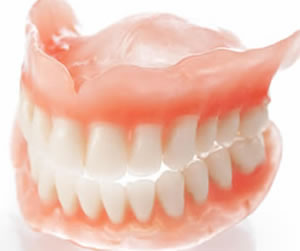
 E-Mail Us
E-Mail Us  416-595-5490
416-595-5490